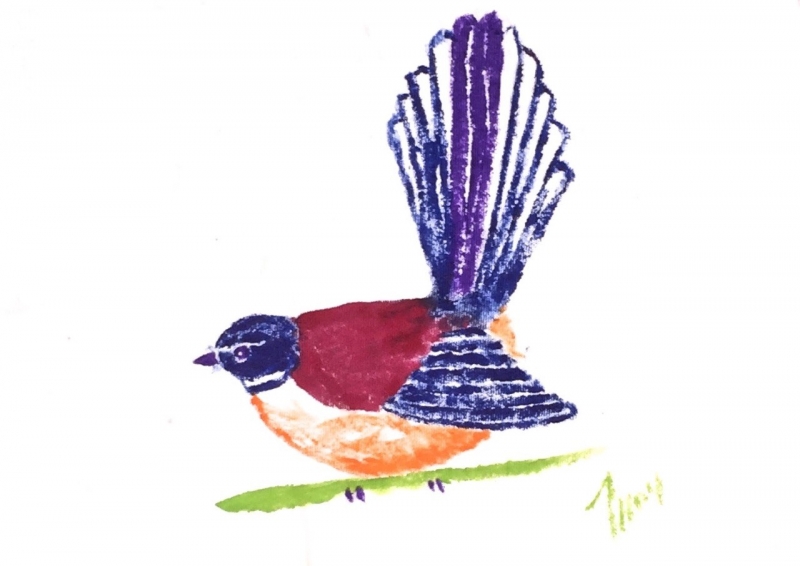By Troy Baisden
It was great to be at Te Pūnaha Matatini’s kickoff. As we look forward to theme meetings next week, I thought it would be useful if I explain a little more about what I’m up to, and why I’ve linked GNS Science’s “Global Change Through Time” programme to your CoRE.
In my lightning talk, at the Te Pūnaha Matatini’s kickoff, I pointed out that I work on problems like climate change and water quality. I think everyone is on board with this: we all agree these problems are complex, yet inspiring and important. They’re perhaps not funded in your CoRE because they’re so big and largely funded elsewhere. As a result, it makes good sense for someone like me involved in big CRI-based programmes on these topics to affiliate with Te Pūnaha Matatini.
But I got a sense that perhaps even complexity geeks want to keep their distance when I say, “I’m here to work on problems so big, no single person can understand them.” But that’s exactly what the problems of climate change and water quality are, by the time we recognise that solutions have to involve not only the biogeophysical system, but also societal and economic transformation.
For example, the IPCC‘s summaries of what we know about the climate change problem run to three enormous volumes, which are further summarised and integrated in another tome called a synthesis report. My goal is to help people develop tools that sort through the information in these tomes and make it work for them. That’s why I’ve joined Te Pūnaha Matatini.
I’m looking for new, better and more effective ways to think about how we build the academic architecture that connects the dots within big issues. Our knowledge about climate change, which still seeks workable solutions, developed over time from relatively simple pieces. If we agree we’re not managing climate change as well as we should, it’s important to think about redesigning the way we’re addressing this big issue. It may be we can learn from other similar problems, using them as model systems.
I’m reminded of Gall’s Law:
“A complex system that works is invariably found to have evolved from a simple system that worked. A complex system designed from scratch never works and cannot be patched up to make it work. You have to start over with a working simple system.”
Complexity is about simple sensible things, that when connected together, are no longer simple. In this sense, building Te Pūnaha Matatini is, itself, an important complexity challenge.
I’ve come to the view that a structure like Te Pūnaha Matatini has been selected to provide some initial building blocks, each a relatively simple piece, or project. Our challenge in the early stages of development is to connect them together, keep the process exciting and simple, yet end up with something that is much more than the sum of its parts.
Within each theme, a limited number of projects will have to start simple and become working systems. One of the most interesting features of complex systems is that they often contain nested hierarchies of simpler systems. It interests me that global change, by being a series of connected problems, requires us to develop some frameworks for understanding the whole set of problems. By looking at how we can make connections and identify similar approaches during the building of Te Pūnaha Matatini, I’ll be looking for the links that help us see and manage complexity. And I’ll be looking at how these systems fit into the even bigger picture of global change. This matters for the science of science policy, which seems to be at the heart of Te Pūnaha Matatini.
When taking on a role building something, it’s important to have a goal, and mine is to improve strategy, policy and decisions across global change issues. When we begin discussing strategy, policy and decisions, complexity matters. There’s often a desire to focus on isolating problems and managing the simple systems, excluding surrounding complexity. Yet, the complex interactions in wider systems often generate unexpected instability. Bigger systems can have dynamics that are orthogonal to our expectations from simple systems. Ultimately, I see a need to improve how we generate expectations – a goal which has permeated complexity science from quantum mechanics, to social sciences, to earth system science, and beyond. Right now I’m interested how we can tackle this within dynamic research structures that obey Gall’s law, and deliver better expectations to strategy, policy and decision processes.
To conclude on a lighter note, I’ll point out that things within Te Pūnaha Matatini that catch my eye may surprise you, and have been useful insights to me. For instance, I include global trade within my definition of global change. This leads me to see big opportunities to ask whether better understanding of supply chains helps us identify how and when we can better transmit environmental value from consumers to producers, to help maintain our “clean, green” image. And I think that the success predator eradication is having in mobilising the community and voluntary sector could be a good model for wider environmental causes, and deserves attention.
I look forward to seeing our expectations evolve, and hopefully finding more insights and surprises along the way. In a sense, we’re building our nest, and it should be composed of well chosen pieces – some structural, some sticky and some shiny and interesting.




